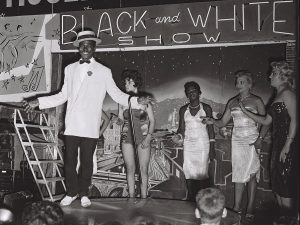As the Schueberfouer is about to start again, familiar sounds of the fair will spill across the Glacis. Between hydraulic hisses, competing melodies and screams from excited thrill-seekers, the compelling voices calling out to passersby are perhaps the most distinctive ones. How was it during the long 1960s? In the latest research from the University of Luxembourg’s C²DH, Véronique Faber explores how these “Recommandeurs” cut through the sensory chaos to attract visitors, blending theatrical skill, multilingual orality, and showmanship. Listen to the podcast interview with Dr. Vanessa Toulmin, founder of the National Fairground and Circus Archive, where she shares her expertise on this unique art form, combining lived experience and international perspective.
***
At today’s Schueberfouer, barkers, known locally as Recommandeurs, announce attractions and build excitement during the ride. In the past, they were closely linked to the elaborate show booths with their parades, a sort of teaser for the performances, and spectacles that could be seen inside once the entrance fee was paid. A fairground parade featured various sensory stimuli, including colours, lights, sounds, music, dancers, and performers, suggesting transformative experiences by tantalising the crowd with promises of what they might encounter within the show. In this overwhelming sensory landscape, barkers had to master the art of cutting through the noise – their voices becoming essential tools for survival in the competitive fairground economy.
Véronique Faber from the University of Luxembourg’s Centre for Contemporary and Digital History (C²DH) is studying how national, transregional and transnational elements intertwined in popular fairground culture through the example of the Schueberfouer between 1945 and 1975. As part of this research within the “Popular Culture Transnational – Europe in the Long 1960s” project, she spoke to Dr. Vanessa Toulmin from the University of Sheffield and founder of the National Fairground and Circus Archive to explore this art of attracting customers.Born into a fairground family, Dr. Vanessa Toulmin has worked with fairgrounds all over the world and indeed also with the Crazy Cinematograph at the Schueberfouer. Her combination of academic expertise, lived experience, and international perspective make her perhaps the foremost expert on fairground barking in Europe.
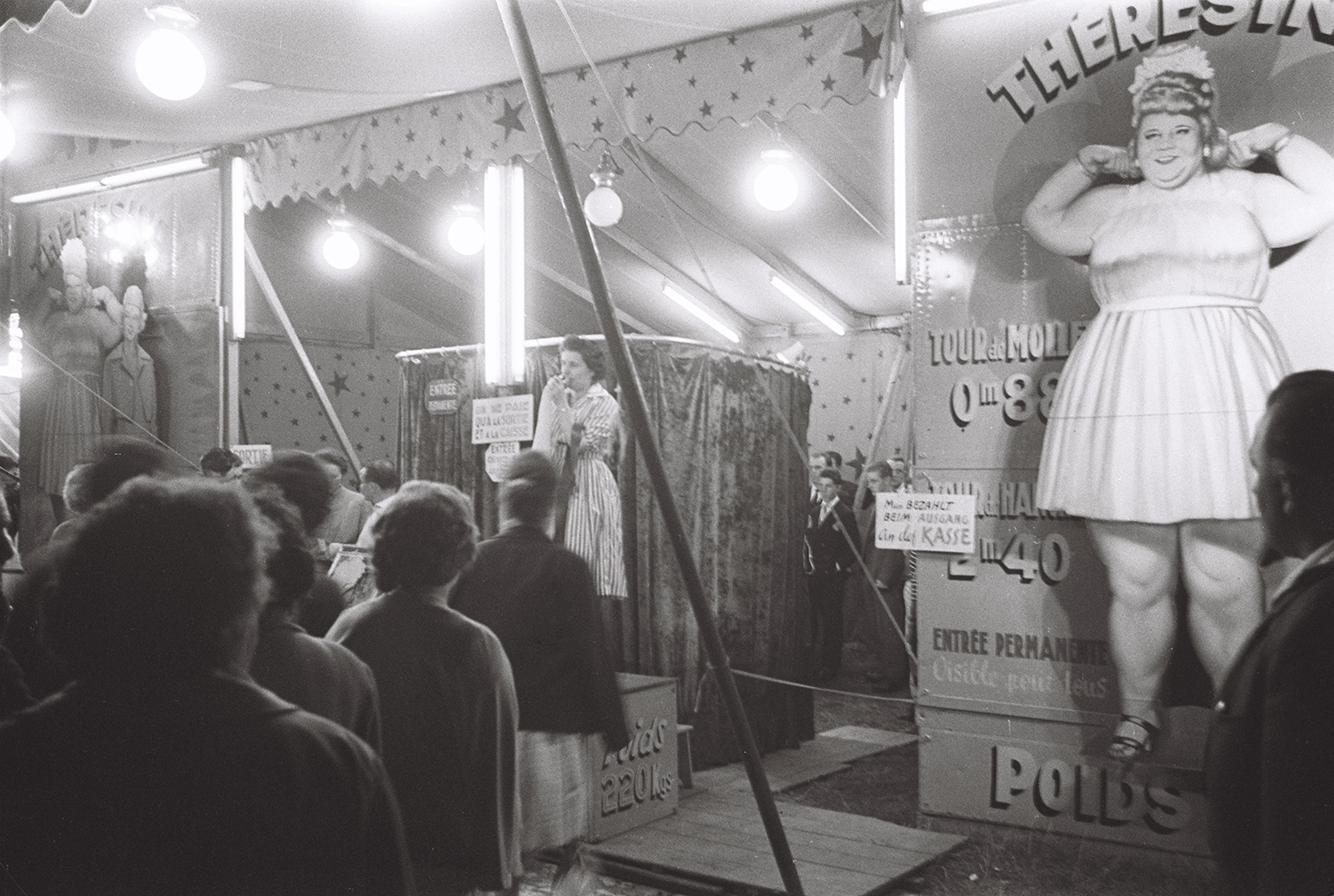
© Photothèque de la Ville de Luxembourg, Collection Pol Aschman (1960)
A Multilingual Cacophony
At the Schueberfouer, barkers employed a variety of accents and regional dialects, reflecting their origins from diverse geographical regions within France, Germany, and Belgium, encompassing both the Flemish and Walloon dialects and German-speaking areas. In some cases, they came from the Netherlands and would have spoken German with different Dutch accents. This ‘multilingual cacophony’ would be amplified by the megaphone and, from the 1950s, by the microphone. This technological shift allowed their voices to reach a larger audience more effectively as they were now connected to loudspeakers.
While the orality employed by the barkers at the Schueberfouer, demonstrated their capacity to capture attention and convey excitement even though the precise words were not universally comprehensible in a multilingual environment. Non-verbal cues, including body language, gestures, and facial expressions, would have played a critical role in communication as they could transcend language barriers.
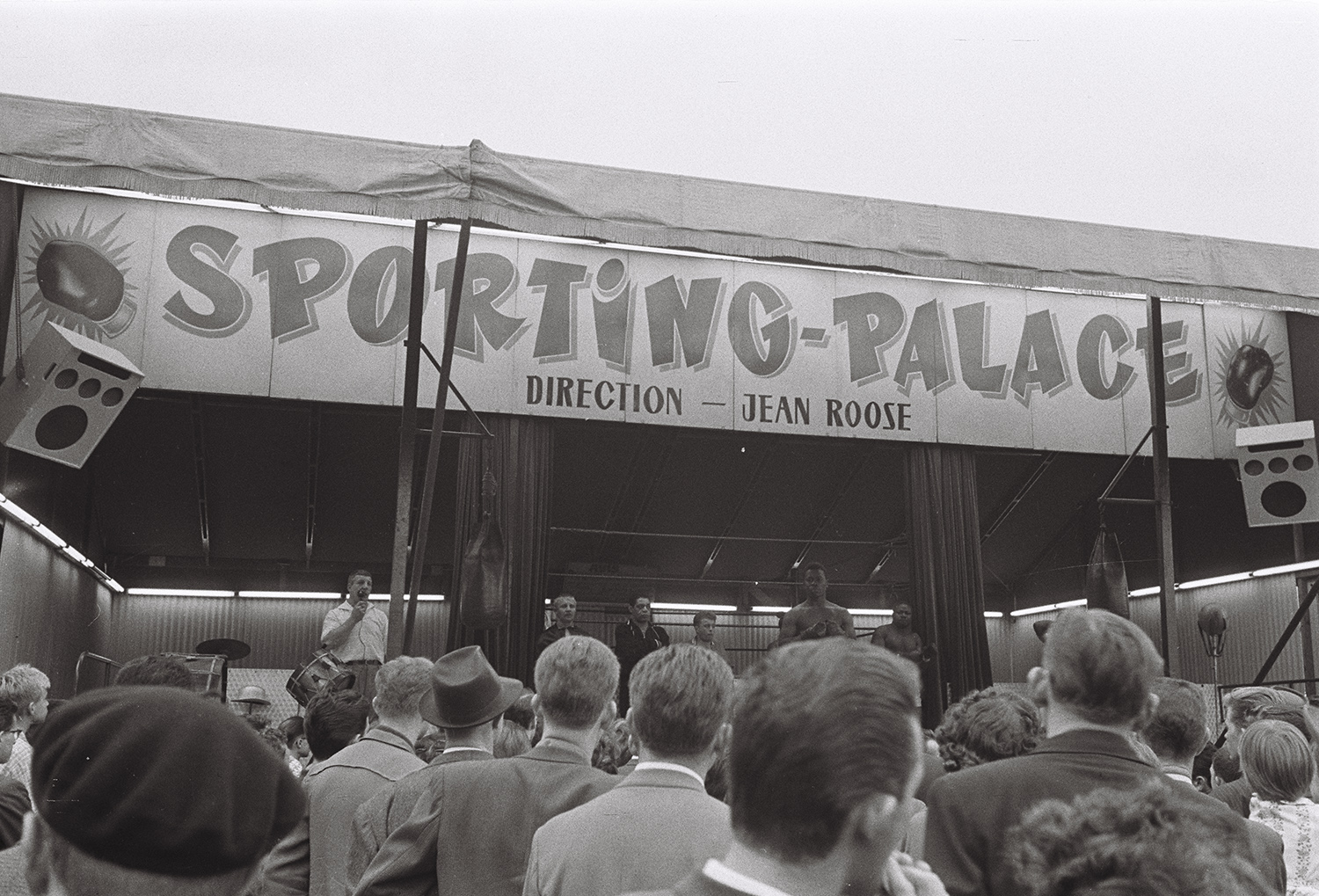
© Photothèque de la Ville de Luxembourg, Collection Pol Aschman (1960)
Masters of Showmanship
The barkers were ringmasters, enticing visitors to enter and explore the remarkable features and wonders. Their theatrical style embodied a carnivalesque ethos, characterised by humour and a festive air. Literature and theatre scholar Agnès Curel, in her book Le Grand Théâtre du bonimenteur. Pratiques spectaculaires et imaginaires culturels (1845-1914) about barkers in Parisian fairs and cabarets during the 19th and early 20th centuries, explored how this figure challenged the relationship between theatre and orality, suggesting that the barker characterised a form of theatre rooted in the power of spoken performance, including vocal expressions and auditory elements in engaging an audience. This performance was not merely a form of publicity; it was also a work of aesthetic art, which conjured up marvels yet to be explored. Curel described the barker as a figure of the in-between; their words created the matrix for the subsequent show to ‘appear’.
The barker’s performance was instrumental in attracting and engaging a diverse audience. Historian Vanessa Toulmin underscored that showmanship involved broader skills extending beyond vocal communication. Showmanship encompassed visual and dramatic elements, including costumes, stagecraft, and theatrical presentation, collectively contributing to a compelling and entertaining performance. The artful use of persuasive speech was characterised by its contextual nature, frequently drawing upon exotic provenance or extraordinary backstories to underscore the distinctiveness of the performers in the show.
Interview with Dr. Vanessa Toulmin
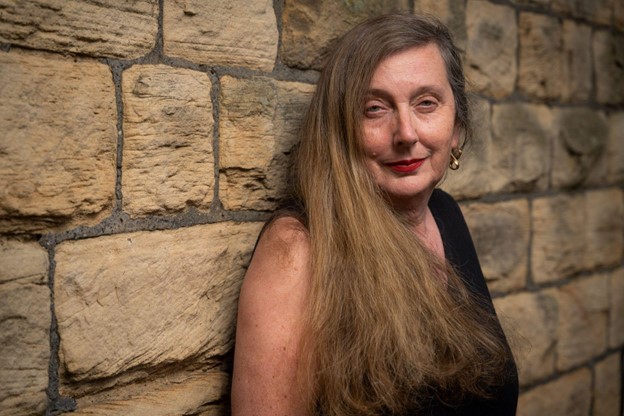
Embracing the Deception
The backstories of show booths were filled with grand promises, enticing visitors with the allure of extraordinary experiences. However, visitors often anticipated a degree of disappointment as part of the entertainment. This expectation was so ingrained that in a Schueberfouer review in the Luxemburger Wort, on 1 September 1978, the reporter wrote that the parade outside the show booth often appeared more impressive than the actual spectacle inside. He went on to articulate a common sentiment:
‘In show booths, you are always fooled somehow; this is part of a [Schueber]Fouer, but it is interesting to find out in which more or less intelligent way it happens.’
Despite knowing they might be disappointed, visitors were drawn by curiosity about how they would be fooled, making the experience all the more captivating – and this is probably still true today.
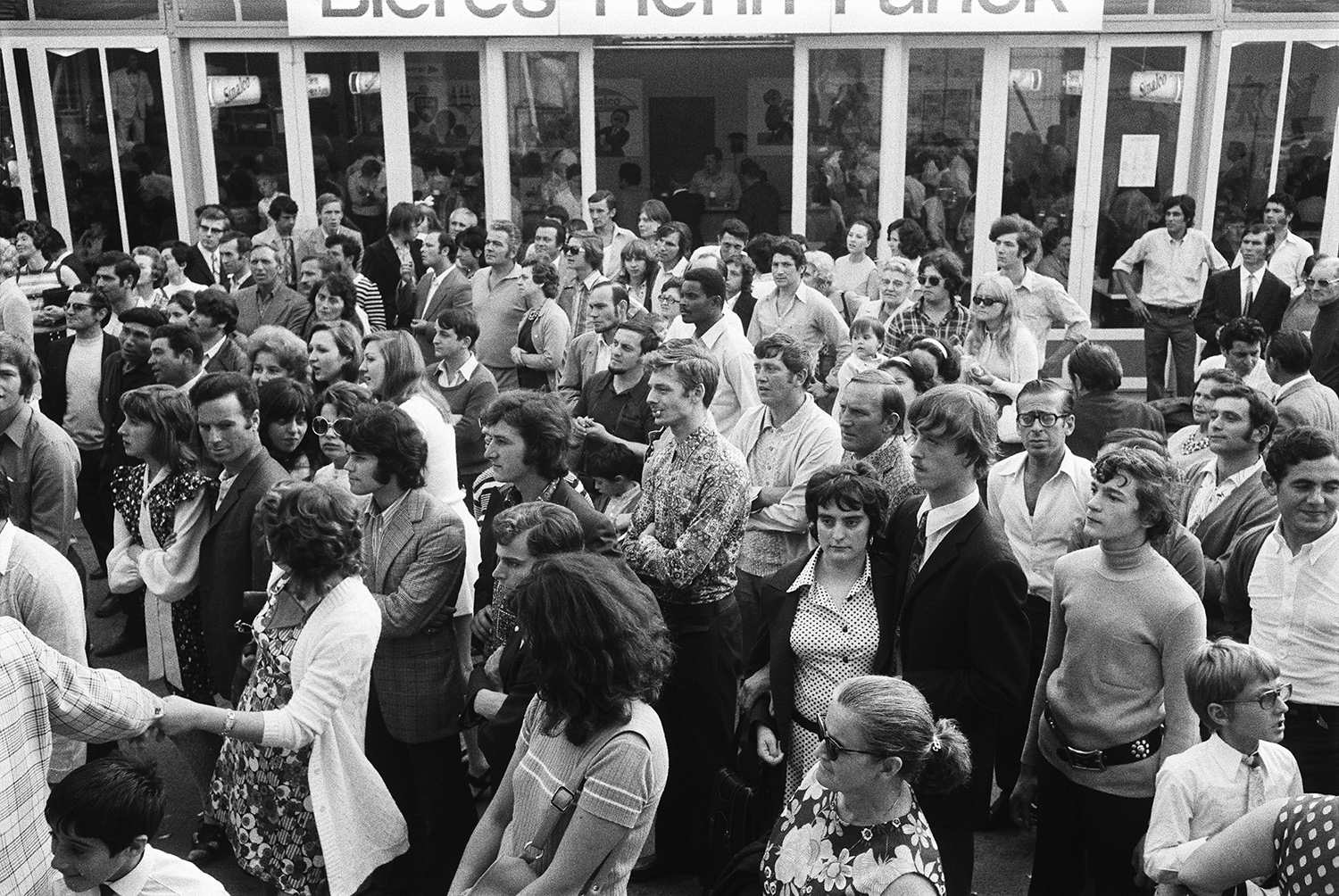
© Photothèque de la Ville de Luxembourg, Collection Pol Aschman (1972)
